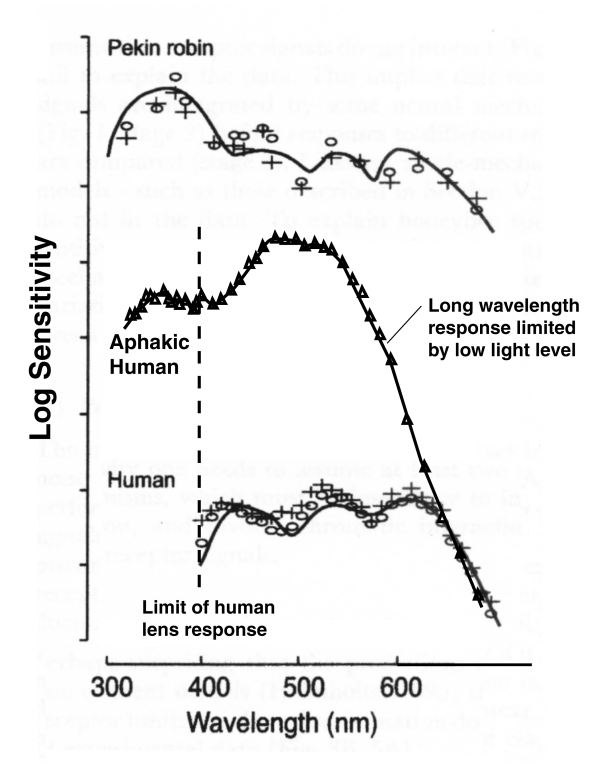
While it may come as a surprise that the human retina is tetrachromatic with sensitivity extending down to 300 nm, the fact is easily demonstrated in-vivo using living subjects. A number of people have had the "crystalline lens" of one of their eyes removed (without replacement by a plastic lens). These subjects are able to see in the ultraviolet region (300-400 nm) as well as the conventional spectrum because of the intrinsic sensitivity of their retina.
The following figure shows data from two individuals and one bird. The upper and lower traces are provided by Kelber et al. while the middle trace is provided by Griswold & Stark. Note the long wavelength region of the middle trace is attenuated because of the low light level used to protect the subject during the data taking phase of the early experiments of Griswold & Stark.

The ultraviolet sensitivity of the human retina is within a factor of ten of the peak sensitivity of the retina. This is the same order of sensitivity of both the short wavelength and long wavelength channels relative to the peak sensitivity of the medium wavelength channel.
The cutoff wavelength of the human lens is shown by the dashed line. It is clearly the limiting element controlling the short wavelength limit of the human eye. It is the thickness of the lens compared to that of the smaller bird (and other smaller animals, including mammals) that restricts the ultraviolet vision of humans and other large mammals.
Additional documentation regarding this subject is available in Section 17.2.2.1 of Chapter 17 (Part 1a of the downloadable chapters on the left of the index page of the site)
Griswold, M. & Stark, W. (1992) Scotopic spectral sensitivity of phakic and aphakic observers extending into the near ultraviolet. Vision Res. vol. 32, no. 9, pp 1739-1743
Kelber, A. Vorobyev, M. & Osorio, D. (2003) Animal colour vision-behavioral tests and physiological concepts Biol Rev vol 78, pp 81-118
Tan, K. (1971) Vision in the ultraviolet. Ph. D. thesis. Utrecht, Holland: Rijksuniversiteit te Utrecht, also University of Missouri (Columbia) Library, call no. QP481.T16. Also available in a review by Stark, W. & Tan, K. (1982), Photochem. Photobiol. vol. 36, pp 371-380